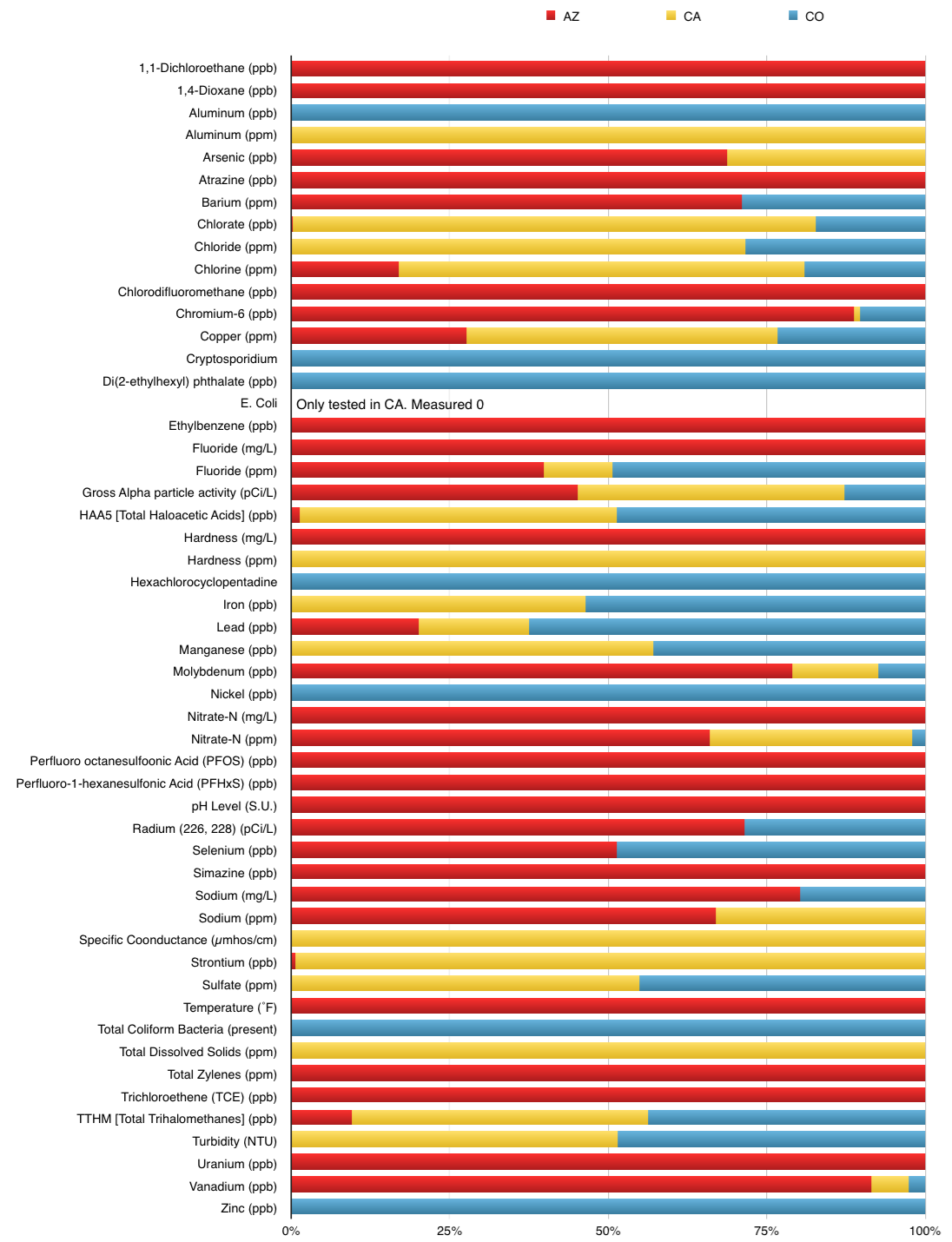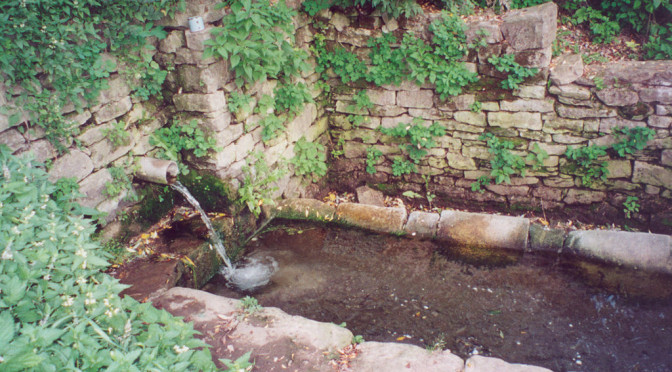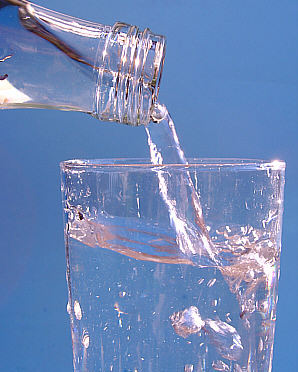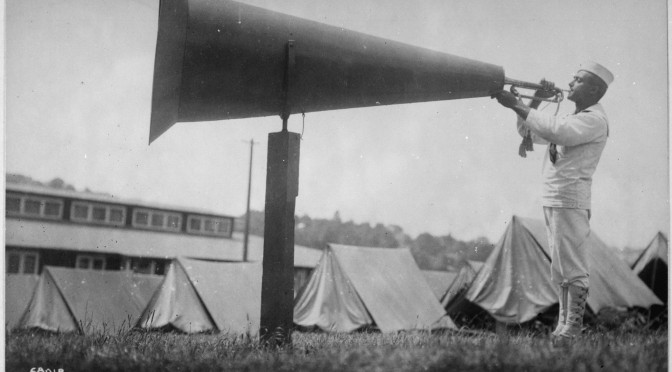As a continuation of our discussion on Thirst, it has come to light, that there is a great deal of misunderstanding and lore surrounding municipal water, it’s cleanliness and it’s locality.
It has become that perhaps the fault is within education… the goto excuse which prevents us from violently shaming our idiot neighbors.
Directing our attention to widely perpetuated ignorance on the subject of water, it’s no surprise that it’s often a subject of debate in the home, office and church confessionals of California (so we assume).
During a recent discussion across the November Turkey, the topic of water arose. Initially as a benign reflection on observations from the previous day’s grocery run of dinner hosts loading up on the crates of thin-walled 12 oz bottles of H2O, the conversation quickly turned abrasive.
As sheltered psudo-activists, living in the midst of a staggering drought, we save our shower water, mix it with our sink water, drain it through our compostables and into our non-edible gardens which slowly percolate into our fruits and then our worm-fertilized veggies seeping through the vadose zone and into the aquifer, recharging our supply. To say the least, we’re not all to worldly on the matter and can become defensive when confronted with alternate lifestyles.
Thus, while visiting a The Rocky Mountain State, we were, to say the least, appalled by the smug rotund lemmings stacked around the corner of the check-out counter with their bottles.
Returning to the Turkey, our slender kin scoffed at our predicament in the arid Western homeland and we redoubled with defiance as we began to strategically tear down the fundamental assumptions of The Rocky Mountain State population’s water, or any water source for that matter.
First, the assumption that ‘mine is cleaner than yours’ and second, ‘it’s more local than yours.’ These positions seem to us to be offensively diametric and so we proudly forged ahead…
Mine Is Cleaner Than Yours
Mount Superiority is a difficult pinnacle to stand upon, especially if you provoke scrutiny. (I think comments are closed for this article…)
To understand the cleanliness of water we must understand how water works. At an elementary level, water is not created and destroyed, rather it flows through and across the ground and air changing form when necessary and pooling for lack of a better option. Throughout this whole process it collects and sheds various non-water molecules, usually referred to as ‘contaminants.’
Many natural and man-made mechanisms support the collection and removal of these contaminants and each municipality responsible for the collection and distribution of water to customers applies applicable versions of these processes, usually focusing on removal, at a water treatment facility.
However, while water can be decontaminated by various mechanisms within a municipal system, as soon as the water departs the treatment facility, water will resume collecting available environmental contaminants during it’s journey to our cup.
(The process for decontaminating bottled water is the same, except it would not be exposed to contaminants between the municipal facility and our tap)
If we assume that water is 100% decontaminated as it exits the treatment facility, or under the assertion that a pure source is available in our backyard, older homes plumbed with galvanized iron pipes will leech degraded oxidize iron into the water. Copper pipes in modern residential plumbing installations are connected with solder that contains Tin, Copper, and Selenium, or for more costly installations, Tin, Copper, and Silver, which similarly leech into water sitting and moving through pipes, especially when hot. Even the most modern plumbing installations of plastic ABS joined by chemical glues, degrade a plethora of inorganic material into shower and sink faucets.
All styles, no matter the plumbing, terminate at a plastic, brass or alloy faucet, which when not regulated, may even contain lead.
“It is possible that lead levels at your home may be higher than other homes in the community as a result of materials used in your home’s plumbing. If you are concerned about elevated lead levels in your home’s water, flush your tap for 30 seconds to 2 minutes before using tap water. You may also wish to have your water tested. Additional information is available from the EPA Safe Drinking Water Hotline at 1-800-426-4791”
Considering this level of exposure, if we set aside universal end-user contamination, we are left to evaluate water reports, provided by the municipalities, that generally measure contamination at the treatment facility.
These reports are widely available and distributed regularly to customers. Each report focuses on likely local contaminants often omitting evaluations of minerals and compounds that are likely not apart of the environment. However, all reports contain a list of contaminants that are regulated by environmental and health related government offices, giving consumers a baseline for understanding contamination within the service zone.
As examples, we compared three arid Western-State cities. An Arizona city fed by 100% Groundwater via local wells; A Colorado city fed by 75% Aqueduct; and a California city fed by 100% Surface Water.
With the contaminant data, we were able to construct a visual comparison of the diversity of drinking water contaminants. The chart highlights the variation between the monitoring and reporting. In many cases municipalities measured for the same contaminants, however, in some cases, only one or two of the municipalities may have measured for specific contaminants, for example, Zinc.

A comparison of Water Quality Reports from AZ, CA, and CO cities. The graph is based on a comparative percentages with the highest detected amount of any of the cities equal to 100%.
Contaminants measured in at least one of the municipalities evaluated: Aluminum (ppm); Arsenic (ppb); Atrazine (ppb); Barium (ppm); Chlorate (ppb); Chloride (ppm); Chlorine (ppm); Chlorodifluoromethane (ppb); Chromium-6 (ppb); Copper (ppm); Cryptosporidium; Di(2-ethylhexyl) phthalate (ppb); E. Coli; Ethylbenzene (ppb); Fluoride (mg/L); Fluoride (ppm); Gross Alpha particle activity (pCi/L); HAA5 [Total Haloacetic Acids] (ppb); Hardness (mg/L); Hardness (ppm); Hexachlorocyclopentadine; Iron (ppb); Lead (ppb); Manganese (ppb); Molybdenum (ppb); Nickel (ppb); Nitrate-N (mg/L); Nitrate-N (ppm); Perfluoro octanesulfoonic Acid (PFOS) (ppb); Perfluoro-1-hexanesulfonic Acid (PFHxS) (ppb); pH Level (S.U.); Radium (226, 228) (pCi/L); Selenium (ppb); Simazine (ppb); Sodium (mg/L); Sodium (ppm); Specific Coonductance (µmhos/cm); Strontium (ppb); Sulfate (ppm); Temperature (˚F); Total Coliform Bacteria (present); Total Dissolved Solids (ppm); Total Zylenes (ppm); Trichloroethene (TCE) (ppb); TTHM [Total Trihalomethanes] (ppb); Turbidity (NTU); Uranium (ppb); Vanadium (ppb); Zinc (ppb);
Still contaminant concerned… why not buy bottled water? I’ll tell you.
By these reports, ‘cleaner’ water is a mere figment of pretension that evaporates faster than the sensibility that contaminated water is inherent in any supply.
It is up to us, both the consumer and producer, to evaluate contaminates closely in comparison to our health and environment; not in order to belittle our neighbor but to share novel solutions to monitor, clean, and protect our resources.
Second, it’s local.
Mount Superiority is remarkably arid, if not for Mount ColdNWet, we’d likely shrivel soaked in our pretension.
…as for the claim, Maybe it’s true, but probably not.
Remarkably, in our evaluation of the above of municipalities, both the Arizona city and the California City rely on local water sources. In parts of Arizona, wells can be seen pumping behind locked gates across the city. In some isolated California cities, the water flows down mountain ranges into lakes and aquifers that feed residents in the area. Conversely, and in line with growing communities across the world, our Colorado city is fed by water sourced close to two-hundred miles away (compare to Southern California’s Colorado River Aqueduct that is just under two-hundred fifty miles) and pumped in via pipeline and an expanding river diversion & aqueduct transport program.
This second assertion, ‘it’s local,’ originates in many minds across many cities and cultures, but is rarely genuine when that mind is sitting on .125 acres. The suburban density invites rapid growth and drains local supplies quickly. Even in locally sourced communities, growth is consuming more than the natural recharge rate and drought is inevitable unless reasonable policy making is pursued and communities adapt.
In our examples, Arizona provides incentives for rain-water collection and both individuals and communities are rapidly engineering and deploying systems to reduce dependencies on pumped & treated water. Our California example is seeking stronger development of alternate sourced local water through desalination in conjunction with rainwater catchment systems and effective grey-water policies. Surprisingly, our Colorado example city continues to enforce rain-water collection policies through unreasonable penalties, discouraging conservation of local reserves and sustainable practices.
It is in these places, above all, that wisdom must prevail. Humanity is proud, but thirst is a frantic matter. We must make decisions that prevent panic and support the health and welfare of our communities. Tired, trite sentiments like our two examples above provide no solution and populate an absurd notion of abstention or, even worse, absolution. Exhaust yourself of this mentality and know, there are solutions to sustain us.
Yet we are thirsty.



